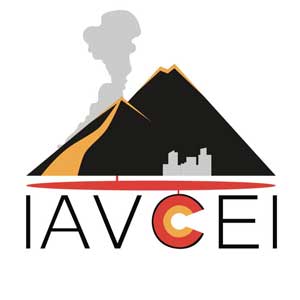Latest (Aug-Nov 2025) | May-Jul 2025 | Apr 2025 | ArchiveFeb-Mar 2025 | Jan 2025 | Aug-Dec 2024 | Jul 2024 | Jan-Jun 2024 | Aug-Dec 2023 | Feb-Jul 2023 | Jan 2023 | Jun-Dec 2022 | Feb-May 2022 | Jan 2022 | Sep-Dec 2021 | Jul-Aug 2021 | Jun 2021 | May 2021 | Mar-Apr 2021 | Feb 2021 | Jan 2021 | Oct-Dec 2020 | May-Sep 2020 | Jan-Apr 2020 | Oct-Dec 2019 | Jul-Sep 2019 | Feb-Jun 2019 | Jan 2019 | Oct-Dec 2018 | Jan-Sep 2018 | Mar-Dec 2017 | Jan-Feb 2017 | May-Dec 2016 | Jan-Apr 2016 | Nov-Dec 2015 | Jan-Oct 2015 | Jun-Dec 2014 | Mar-May 2014 | Jan-Feb 2014 | Nov-Dec 2013 | Apr-Oct 2013 | Jan-Mar 2013 | Jun-Dec 2012 | Mar-May 2012 | Jan-Feb 2012 | Aug-Dec 2011 | Jan-Jul 2011 | 2010 | 2009 | 2008 | 2007 | Nov-Dec 2006 | Jan-Oct 2006 | 2005 | 2004
Etna Volcano (Italy) activity update Sep 25, 2025 - Eruptive activity decreased
Friday, Sep 26, 2025 | 1 month ago · VN
The Instituto Nazionale di Geofisica e Vulcanologia-Osservatorio Etneo (INGV-Osservatorio Etneo) reported that eruptive activity decreased at Etna on 25 September 2025 (local). The aviation alert leve…Open article
Etna Volcano (Italy) activity update Sep 23, 2025 - Continuing eruption
Wednesday, Sep 24, 2025 | 1 month ago · VN
The Instituto Nazionale di Geofisica e Vulcanologia-Osservatorio Etneo (INGV-Osservatorio Etneo) reported that the eruption continued at Etna on 23 September 2025 (local). There were explosions report…The Instituto Nazionale di Geofisica e Vulcanologia-Osservatorio Etneo (INGV-Osservatorio Etneo) reported that the eruption continued at Etna on 23 September 2025 (local). There were explosions reported. The aviation alert level was raised to "Yellow" (level 2 on a 4-level scale) on 23 September 2025 at 0623 by INGV due to increasing activity at the summit craters. The aviation alert level was rai…Open article
Show more
Etna volcano update: lava effusion has ended
Thursday, Sep 4, 2025 | 2 months ago · martin

Etna volcano (Italy) - Smithsonian / USGS Weekly Volcanic Activity Report for 27 August-2 September 2025 (Continuing Activity)
Wednesday, Sep 3, 2025 | 2 months ago · VN
The Sezione di Catania - Osservatorio Etneo (INGV) reported that eruptive activity at Etna’s summit craters during 25-31 August was characterized by decreasing lava effusion at multiple vents. Strombo…The Sezione di Catania - Osservatorio Etneo (INGV) reported that eruptive activity at Etna’s summit craters during 25-31 August was characterized by decreasing lava effusion at multiple vents. Strombolian activity and ash emissions occurred from SE Crater, and there were gas emissions at NE, Bocca Nuova, and Voragine craters. Strombolian activity of varying intensity at two vents at SE Crater ejec…Open article
Etna Volcano (Italy) activity update Sep 2, 2025 - Continuing eruption
Wednesday, Sep 3, 2025 | 2 months ago · VN
The Instituto Nazionale di Geofisica e Vulcanologia-Osservatorio Etneo (INGV-Osservatorio Etneo) reported that the eruption continued at Etna between 1 September 2025 (local) and 2 September 2025 (loc…Open article
Etna volcano update: explosive-effusive activity slowed down
Monday, Sep 1, 2025 | 2 months ago · martin

The National Institute of Geophysics and Volcanology reported that the ongoing explosive-effusive eruption at the volcano has decreased.
Strombolian explosions from the Southeast crater have become wea…Open article
Strombolian explosions from the Southeast crater have become wea…Open article
Etna volcano update: impressive video of lava flow
Saturday, Aug 30, 2025 | 2 months ago · martin

A spectacular video of the oozing lava flow emanating from the eruptive fissure was captured by the INGV volcanologist Boris Behncke.
Open articleHow does lava sound when it comes to the surface of the Earth? Lis…
Etna volcano update: multiple lava flows continue
Friday, Aug 29, 2025 | 2 months ago · martin

The volcano is characterized by the continuous, elevated effusive-explosive eruption from the SE crater.
Multiple lava flows remain active on the southern flank, emerging from two effusive vents.
The er…The volcano is characterized by the continuous, elevated effusive-explosive eruption from the SE crater.
Multiple lava flows remain active on the southern flank, emerging from two effusive vents.
The eruptive vent, located at an altitude of 2,980 meters, feeds at least three lava arms (detected in the Sentinel-2 imagery), which also branch off into two main lava arms. The most advanced lava flow fro…Open article
Multiple lava flows remain active on the southern flank, emerging from two effusive vents.
The er…The volcano is characterized by the continuous, elevated effusive-explosive eruption from the SE crater.
Multiple lava flows remain active on the southern flank, emerging from two effusive vents.
The eruptive vent, located at an altitude of 2,980 meters, feeds at least three lava arms (detected in the Sentinel-2 imagery), which also branch off into two main lava arms. The most advanced lava flow fro…Open article
Etna Volcano (Italy) activity update Aug 27, 2025 - Eruptive activity decreased
Wednesday, Aug 27, 2025 | 2 months ago · VN
The Instituto Nazionale di Geofisica e Vulcanologia-Osservatorio Etneo (INGV-Osservatorio Etneo) reported that eruptive activity decreased at Etna on 26 August 2025 (local). The alert level at Etna re…The Instituto Nazionale di Geofisica e Vulcanologia-Osservatorio Etneo (INGV-Osservatorio Etneo) reported that eruptive activity decreased at Etna on 26 August 2025 (local). The alert level at Etna remained at "Yellow" (level 2 on a 4-level scale). The aviation alert level was lowered to "Orange" (level 3 on a 4-level scale). At 0419 on 26 August, the Aviation Color Code was lowered due to decreas…Open article
Etna volcano (Italy) - Smithsonian / USGS Weekly Volcanic Activity Report for 20 August-26 August 2025 (Continuing Activity)
Wednesday, Aug 27, 2025 | 2 months ago · VN
The Sezione di Catania - Osservatorio Etneo (INGV) reported that eruptive activity at Etna’s summit craters during 18-24 August was characterized by lava effusion from two vents, Strombolian activity …The Sezione di Catania - Osservatorio Etneo (INGV) reported that eruptive activity at Etna’s summit craters during 18-24 August was characterized by lava effusion from two vents, Strombolian activity and ash emissions at SE Crater, and gas emissions at NE, Bocca Nuova, and Voragine craters. Activity was observed through webcams and by observatory staff doing daily fieldwork in the summit area. Lav…Open article
Show more
Etna Volcano (Italy) activity update Aug 26, 2025 - Eruptive activity increased
Tuesday, Aug 26, 2025 | 2 months ago · VN
The Instituto Nazionale di Geofisica e Vulcanologia-Osservatorio Etneo (INGV-Osservatorio Etneo) reported that eruptive activity increased at Etna on 25 August 2025 (local). The alert level at Etna remained at "Yellow" (level 2 on a 4-level scale). The aviation alert level was raised to "Red" (level…Open article
Etna Volcano Volcanic Ash Advisory: ERUPTION AT 20250825/1950Z STRONG STROMBOLIAN ACTIVITY
Tuesday, Aug 26, 2025 | 2 months ago · VN

Das Warnzentrum für Vulkanasche VAAC Toulouse brachte folgende Meldung heraus: ERUPTION AT 20250825/1950Z STRONG STROMBOLIAN ACTIVITY
Originaltext:
FVXX01 at 02:56 UTC, 26/08/25 from LFPW
VA ADVISORY
DTG:…Open article
Originaltext:
FVXX01 at 02:56 UTC, 26/08/25 from LFPW
VA ADVISORY
DTG:…Open article
Etna Volcano Volcanic Ash Advisory: ERUPTION AT 20250825/1950Z STRONG STROMBOLIAN ACTIVITY to 16000 ft (4900 m)
Monday, Aug 25, 2025 | 2 months ago · VN

Explosive Tätigkeit hält weiterhin an. Das Volcanic Ash Advisory Center (VAAC) в Toulouse warnte vor einer Wolke aus Vulkanasche, die auf eine Höhe von geschätzt 16000 Fuß (4900 m) bzw. Flight Level 1…Open article
Etna Volcano (Italy) activity update Aug 25, 2025 - Continuing eruption
Monday, Aug 25, 2025 | 2 months ago · VN
The Instituto Nazionale di Geofisica e Vulcanologia-Osservatorio Etneo (INGV-Osservatorio Etneo) reported that the eruption continued at Etna on 22 August 2025 (local). The alert level at Etna remaine…The Instituto Nazionale di Geofisica e Vulcanologia-Osservatorio Etneo (INGV-Osservatorio Etneo) reported that the eruption continued at Etna on 22 August 2025 (local). The alert level at Etna remained at "Yellow" (level 2 on a 4-level scale). The aviation alert level remained at "Orange" (level 3 on a 4-level scale). There were Strombolian explosions reported. Strombolian activity at the Southeas…Open article
Etna volcano update: continuing lava flows
Sunday, Aug 24, 2025 | 2 months ago · martin

Etna Volcano (Italy) activity update Aug 24, 2025 - Continuing eruption
Sunday, Aug 24, 2025 | 2 months ago · VN
The Instituto Nazionale di Geofisica e Vulcanologia-Osservatorio Etneo (INGV-Osservatorio Etneo) reported that the eruption continued at Etna on 22 August 2025 (local). The alert level at Etna remaine…The Instituto Nazionale di Geofisica e Vulcanologia-Osservatorio Etneo (INGV-Osservatorio Etneo) reported that the eruption continued at Etna on 22 August 2025 (local). The alert level at Etna remained at "Yellow" (level 2 on a 4-level scale). The aviation alert level remained at "Orange" (level 3 on a 4-level scale). There were Strombolian explosions reported. Strombolian activity at the Southeas…Open article
Etna Volcano (Italy) activity update Aug 22, 2025 - Continuing eruption
Friday, Aug 22, 2025 | 2 months ago · VN
The Instituto Nazionale di Geofisica e Vulcanologia-Osservatorio Etneo (INGV-Osservatorio Etneo) reported that the eruption continued at Etna on 21 August 2025 (local). The alert level at Etna remaine…The Instituto Nazionale di Geofisica e Vulcanologia-Osservatorio Etneo (INGV-Osservatorio Etneo) reported that the eruption continued at Etna on 21 August 2025 (local). The alert level at Etna remained at "Yellow" (level 2 on a 4-level scale). The aviation alert level remained at "Orange" (level 3 on a 4-level scale). There were Strombolian explosions reported. Lava effusion continued from two ven…Open article
Etna volcano update: two lava branches seen from space
Friday, Aug 22, 2025 | 2 months ago · martin

Etna Volcano (Italy) activity update Aug 21, 2025 - Continuing eruption
Thursday, Aug 21, 2025 | 2 months ago · VN
The Instituto Nazionale di Geofisica e Vulcanologia-Osservatorio Etneo (INGV-Osservatorio Etneo) reported that the eruption continued at Etna on 20 August 2025 (local).
Source: Instituto Nazionale di …Open article
Source: Instituto Nazionale di …Open article
Etna volcano update: new fissure vent opened on southern flank
Thursday, Aug 21, 2025 | 2 months ago · martin

A new eruptive fissure opened on the southern flank of the Southeast Crater at about 13:40 local time yesterday.
A new lava flow effuses from an altitude of 3,200 meters above sea level towards the sou…Open article
A new lava flow effuses from an altitude of 3,200 meters above sea level towards the sou…Open article
Show more
Etna volcano (Italy) - Smithsonian / USGS Weekly Volcanic Activity Report for 13 August-19 August 2025 (Continuing Activity)
Wednesday, Aug 20, 2025 | 2 months ago · VN
The Sezione di Catania - Osservatorio Etneo (INGV) reported that eruptive activity at Etna’s summit craters during 11-17 August was characterized by lava effusion and periodic reddish ash emissions at…The Sezione di Catania - Osservatorio Etneo (INGV) reported that eruptive activity at Etna’s summit craters during 11-17 August was characterized by lava effusion and periodic reddish ash emissions at Bocca Nuova Crater, Strombolian activity at SE Crater, and gas emissions at both NE Crater and Voragine. Lava effusion restarted at 1245 on 14 August along the N-S-trending fissure located between Bo…Open article
Etna volcano update: satellite image of new lava flow
Tuesday, Aug 19, 2025 | 2 months ago · martin

Etna volcano update: Lava flow activity increases
Sunday, Aug 17, 2025 | 3 months ago · T

The effusive activity from the new vents at the southern base of the SE crater continues and has been gradually increasing over the past few days.
The lava flow front has now descended to approx. 2400 m elevation. After the first lava flow that had started on 10 Aug had ceased after a relatively mod…The effusive activity from the new vents at the southern base of the SE crater continues and has been gradually increasing over the past few days.
The lava flow front has now descended to approx. 2400 m elevation. After the first lava flow that had started on 10 Aug had ceased after a relatively modest lava output only, a new vent opened nearby on 14 Aug at around 2980 m elevation, on the southern slope between the Bocca Nuova and SE crater complex on 14 Aug, with a higher effusion rate. This vent has been feeding the active flow at the moment.
In addition, mild strombolian activity has returned to the summit vent of the SE crater, ejecting glowing lava fragments above the rim of the crater, …Open article
The lava flow front has now descended to approx. 2400 m elevation. After the first lava flow that had started on 10 Aug had ceased after a relatively mod…The effusive activity from the new vents at the southern base of the SE crater continues and has been gradually increasing over the past few days.
The lava flow front has now descended to approx. 2400 m elevation. After the first lava flow that had started on 10 Aug had ceased after a relatively modest lava output only, a new vent opened nearby on 14 Aug at around 2980 m elevation, on the southern slope between the Bocca Nuova and SE crater complex on 14 Aug, with a higher effusion rate. This vent has been feeding the active flow at the moment.
In addition, mild strombolian activity has returned to the summit vent of the SE crater, ejecting glowing lava fragments above the rim of the crater, …Open article
Etna volcano (Italy) - Smithsonian / USGS Weekly Volcanic Activity Report for 6 August-12 August 2025 (Continuing Activity)
Wednesday, Aug 13, 2025 | 3 months ago · VN
The Sezione di Catania - Osservatorio Etneo (INGV) reported eruptive activity at Etna’s summit craters during 4-10 August. Gas emissions rose from Bocca Nuova Crater, NE Crater, and Voragine. Modest explosive activity at two vents at SE Crater ejected lava fragments that fell back into the crater an…The Sezione di Catania - Osservatorio Etneo (INGV) reported eruptive activity at Etna’s summit craters during 4-10 August. Gas emissions rose from Bocca Nuova Crater, NE Crater, and Voragine. Modest explosive activity at two vents at SE Crater ejected lava fragments that fell back into the crater and onto the flanks of the cone.
The activity generated diffuse ash emissions that quickly dispersed around the summit area. A fissure on the S flank of Bocca Nuova, which last effused lava during February-March, was again active. Late on 9 August lava effused from a fissure approximately 33 m long and trending N-S located between Bocca Nuova and SE Crater, at around 3,000-3,100 m elevation.
The lava …Open article
The activity generated diffuse ash emissions that quickly dispersed around the summit area. A fissure on the S flank of Bocca Nuova, which last effused lava during February-March, was again active. Late on 9 August lava effused from a fissure approximately 33 m long and trending N-S located between Bocca Nuova and SE Crater, at around 3,000-3,100 m elevation.
The lava …Open article
Etna volcano update: New subterminal lava flow after 2 months of quiet
Wednesday, Aug 13, 2025 | 3 months ago · T

A new lava flow erupted from a small vent at the southern base of the summit craters a few days ago. It is emerging from the area between Bocca Nuova and the South-East crater and slowly moving downslope at an altitude of approx. 3,000-3,100 m.
The activity began Saturday (9 Aug) morning and has been…A new lava flow erupted from a small vent at the southern base of the summit craters a few days ago. It is emerging from the area between Bocca Nuova and the South-East crater and slowly moving downslope at an altitude of approx. 3,000-3,100 m.
The activity began Saturday (9 Aug) morning and has been very modest in effusion rate; no significant seismic activity or volcanic tremor has been detected accompanying it, but it might slowly increase if it is going to evolve similar as the sub-terminal effusive eruption earlier this year in February-March, which lasted several weeks. Volcanic tremor is indeed showing a slowly climbing trend over the past days.
According to the volcano observatory, the…Open article
The activity began Saturday (9 Aug) morning and has been…A new lava flow erupted from a small vent at the southern base of the summit craters a few days ago. It is emerging from the area between Bocca Nuova and the South-East crater and slowly moving downslope at an altitude of approx. 3,000-3,100 m.
The activity began Saturday (9 Aug) morning and has been very modest in effusion rate; no significant seismic activity or volcanic tremor has been detected accompanying it, but it might slowly increase if it is going to evolve similar as the sub-terminal effusive eruption earlier this year in February-March, which lasted several weeks. Volcanic tremor is indeed showing a slowly climbing trend over the past days.
According to the volcano observatory, the…Open article
Etna volcano (Italy) - Smithsonian / USGS Weekly Volcanic Activity Report for 30 July-5 August 2025 (Continuing Activity)
Wednesday, Aug 6, 2025 | 3 months ago · VN
The Istituto Nazionale di Geofisica e Vulcanologia, Osservatorio Etneo (INGV-OE), reported that eruptive activity continued at Etna’s summit craters during 28 July-3 August. The activity primarily involved variable-rate degassing, except at the SE crater, where low-level explosive activity generated…Open article














